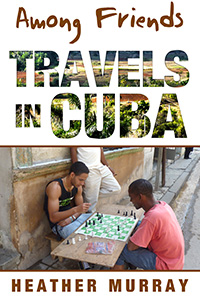
Looking back over the past year, I can confirm that a novice writer’s learning curve is steep indeed. Luckily, the brain is capable of coping with much more than it thinks it can, and of learning from the experience. In this post I’d like to share some things I learnt while writing my first book, a travelogue about life in Cuba.
Find out how you work best
We’re often aware of whether we’re larks or owls – whether we write more efficiently in the morning or at night – but, beyond that, we may not know what pushes us to work efficiently. I have an acquaintance who can produce a non-fiction book in 3 to 4 months. He does this by withdrawing from social life and only leaving his flat to buy food. He calls it his ‘bear in a cave’ phase. I’m different; if I have unlimited time for writing, I waste it. I need well-defined slots of time. So while I was writing my Cuba book, I ended up working only 4 hours a day for 5 days a week, using the rest of the time to keep fit, be outdoors, see family and friends and do household chores. On top of that, I deliberately went on three-week hiking and biking holidays. The weeks away took time out of my writing year, but helped me to work more efficiently when I was back at home. My tip: become aware of conditions that enhance your productivity.
Structure? Try drawing the book’s trajectory
Some writers like to work out their plot in minute detail before they begin, while others feel more comfortable allowing the plot to develop as the characters interact. I had no idea where to end my book of travel adventures, and hadn’t questioned where to begin. As the need for an engaging structure became ever more pressing, I tried drawing it. I found it helpful to locate key events in the narrative along a line that (generally) led towards a highpoint and then descended in a sort of dénouement. This made it easier to decide which episodes to cut and which to strengthen. For writers who are finding their way into the plot of a first book, whether fiction or creative non-fiction, graphically depicting the trajectory of action, information or emotion usually helps with decisions on emphasis, key scenes and sequence.
Pick a title you like
You typically start with a working title, but want a better one, so you churn out alternatives by the page-full. The more titles I produced, the more uncertain I became. Trusting democracy, I conducted an email survey among my extended family. This led to competition and rigged voting among the various clans, which had nothing to do with choosing the best title. My advice is therefore to test a shortlist of titles on a few book-savvy friends – and then go with your gut feeling. You should love the title you’ll later have to promote.
Involve friends according to their talents
Don’t give your first manuscript (or chapters) to all your good friends at the same time. It’s a waste of valuable goodwill. You’ll need feedback or proofreading at a number of junctures while writing, so think carefully about what each friend might be good at. Some may like reacting to the narrative or style, while others may prefer checking for typos and other mistakes. When you share your manuscript for feedback, target these preferences and strengths. Treat goodwill like the treasure it is.
Get professional help with what you’re not good at
When my book was near completion, I started thinking about how to get it published. Convinced that a book about life in Cuba had to be available as quickly as possible, I decided to self-publish via Amazon. After buying book- and cover-design software, subscribing to self-publishing websites, attending webinars and reading all the Amazon upload instructions, I was suffering from knowledge overload and blind panic; I couldn’t imagine doing it all alone. Luckily, I heard about a reasonably priced book-design company in Kentucky that delivered flawless files within a month. It was exactly what I needed. So, if you feel unsure about transforming your finished manuscript into professional-looking pages and cover, don’t do it. Get help.
Now that it’s published I’m working on effective ways to market the book, following writers’ forums and sending emails to special-interest groups to get publicity and reviews. Looking back, everything I’ve learnt over the past year seems easy; the challenges are always in the future.
Although born in Canada, Heather Murray has spent most of her life in Switzerland. She first traveled to Cuba to attend an English teachers’ conference, but has returned several times since to explore the country and visit friends. Her travelogue Among Friends: Travels in Cuba was published in October 2016, and is available as a paperback from Amazon and from most ebook distributors.
Comments